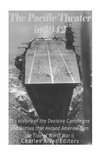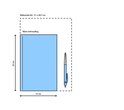The Pacific Theater in 1942 The History of the Decisive Campaigns and Battles That Helped America Turn the Tide of World War II
Afbeeldingen
Artikel vergelijken
Uitgever: Createspace Independent Publishing Platform
Auteur:
Charles River Editors
- Engels
- Paperback
- 9781539875048
- 02 november 2016
- 254 pagina's
Samenvatting
*Includes pictures*Includes accounts of the battles by participants on both sides*Includes a bibliography for further readingThose who had decoded and seen the Japanese communications in early December 1941 would not be surprised when they heard about an attack on December 7, 1941. They would, however, be astonished when they heard where that attack took place. Posted on the other side of the world, it was early on the morning of December 8 in the Philippines when American general Douglas MacArthur received news of the Japanese attack on Pearl Harbor hours earlier. With that, it could only be a matter of time before the Japanese attacked the Philippines. Although MacArthur and Allied forces tried to hold out, they could only fight a delaying action, and the Japanese managed to subdue all resistance by the spring of 1942. The Americans would turn the war in the Pacific around in the middle of 1942, but in the wake of Pearl Harbor and the Japanese invasion of the Philippines, the country was in desperate need of a morale boost, and it would come in the form of the Doolittle Raid. In part to show that the Japanese were not invincible, and in part to reassure the American public that the nation would not lose the war.While the Battle of the Coral Sea is not as well known as other battles across the Pacific, it set a precedent by pitting enemy aircraft carriers against each other, a battle in which the rival navies themselves never sighted each other or fired a gun at each other. Instead, the fighting was done with the carriers’ aircraft, something that would become more common over time and would result in decisive actions at places like Midway just months later. Furthermore, while it was in a sense a tactical victory for the Japanese, it would end up helping blunt their aggressive push east in the Pacific, making it a crucial strategic victory for the Allies. Although not as well-remembered as D-Day or even the attack at Pearl Harbor that preceded it, the Battle of Midway was one of the most unique and important battles fought during World War II. In fact, the turning point in the Pacific theater took place between June 4-7, 1942 as a Japanese fleet moved a sizable fleet intending to occupy Midway Island and draw the American navy near. Instead, American aircraft flying from three aircraft carriers that had been away from Pearl Harbor in December 1941 got a bearing on the Japanese fleet and sunk four Japanese aircraft carriers, permanently crippling Japan’s navy. The Battle of Midway was one of the first major naval battles in history where the enemy fleets never actually saw or came into contact with each other. By the time the Battle of Midway was over, the defeat was so devastating that it was actually kept secret from all but the highest echelons of the Japanese government. Along with the loss of hundreds of aircraft and over 3,000 men killed, the four Japanese aircraft carriers lost, when compared to America’s one lost carrier, was critical considering America’s huge shipbuilding superiority. The Guadalcanal Campaign, which ran from August 1942 to February 1943, was a bitter and protracted struggle that also happened to be a strange and transitional confrontation quite unlike any other in the long Pacific War. In conjunction with the American victory at the Battle of Midway, Guadalcanal represented the crucial moment when the balance of power in the Pacific tipped in favor of the Allies, but the idea that Guadalcanal would be such a significant battle would have come as a surprise to military strategists and planners on both sides. Nonetheless, by the time the Guadalcanal campaign was underway, it was a confrontation that neither side actively sought, but that both sides came to believe they could not afford to lose. Eventually, nearly 100,000 soldiers fought on the island, and the ferocity with which the Japanese fought was a fitting prelude to campaigns like Iwo Jima and Okinawa.
Productspecificaties
Wij vonden geen specificaties voor jouw zoekopdracht '{SEARCH}'.
Inhoud
- Taal
- en
- Bindwijze
- Paperback
- Oorspronkelijke releasedatum
- 02 november 2016
- Aantal pagina's
- 254
- Illustraties
- Nee
Betrokkenen
- Hoofdauteur
- Charles River Editors
- Hoofduitgeverij
- Createspace Independent Publishing Platform
Overige kenmerken
- Extra groot lettertype
- Nee
- Product breedte
- 152 mm
- Product hoogte
- 13 mm
- Product lengte
- 229 mm
- Studieboek
- Ja
- Verpakking breedte
- 152 mm
- Verpakking hoogte
- 13 mm
- Verpakking lengte
- 229 mm
- Verpakkingsgewicht
- 345 g
EAN
- EAN
- 9781539875048
Je vindt dit artikel in
- Categorieën
- Taal
- Engels
- Boek, ebook of luisterboek?
- Boek
- Studieboek of algemeen
- Algemene boeken
Kies gewenste uitvoering
Bindwijze
: Paperback
Prijsinformatie en bestellen
Rapporteer dit artikel
Je wilt melding doen van illegale inhoud over dit artikel:
- Ik wil melding doen als klant
- Ik wil melding doen als autoriteit of trusted flagger
- Ik wil melding doen als partner
- Ik wil melding doen als merkhouder
Geen klant, autoriteit, trusted flagger, merkhouder of partner? Gebruik dan onderstaande link om melding te doen.


